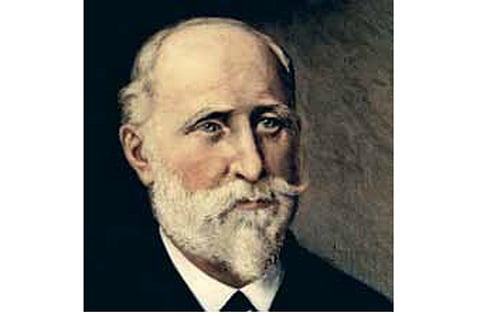Opel Adam reaped what he sewed
From sewing machines to bicycles to motor cars, Opel, seemingly, has built them all

You wouldn’t believe it, but sewing machines and cars are intrinsically linked.
Well, they are in the case of Opel. The carmaker charts its roots way back to 1837 when Adam Opel was born in the town of Rüsselsheim, Germany.
At 20 years old, he travelled to Belgium and France, working as an apprentice locksmith.
While in Paris, he became interested in sewing machines. He was mesmerised by
the technology that went into them and considered them an engineering feat.
In 1862, he returned to his hometown and set up a workshop with his brother, George, where they’d build their own machines.
After marrying the daughter of a well-off family, Adam received a substantial dowry, which he put towards his business and introduced the ‘Sophia’ — a machine named after his wife.
Opel’s factory had grown exponentially and business was booming, but a huge fire
destroyed much of his plant.
Adam was devastated and the brothers decided to close down their venture.
However, they weren’t moping around for too long as their next business proposition, building bicycles, would prove to be far more rewarding.
Adam first saw one in Paris and was intrigued but thought they were dangerous.
However, he realised people liked them and knew they could generate more profit than sewing machines.
In 1866, the Opels built their first bicycle, and soon after, different designs began to take shape, including lowwheeled and threewheeled types. Soon, Opel was making 2,000 bicycles a day and Germany lapped them up.
The next logical step was to build cars, but sadly Adam never lived to see the automobiles his company was to build, as he died in 1895.
Just four years later, the first Opel car left the production line. It was built in partnership with Friedrich Lutzmann. Its name, the Opel-Patent-Motorwagen System Lutzmann, wasn’t catchy — and neither was the car, with just 65 units produced.
Two years later, Opel signed a licensing deal with French Automobiles Darracq S.A. to build the Opel-Darracq.
These featured Opel bodies, a Darracq chassis and two-cylinder motors and fared far better.
In the Thirties, General Motors bought Opel AG and it became a subsidiary. Since then, we’ve had some truly memorable models, my personal favourite being the Manta, built between 1970 and 1988.
With news of Opel building a new city car named after the brand’s founder, the Adam looks as small as a bicycle, however it isn’t powered by a sewing machine motor...
Sign up for the Daily Briefing
Get the latest news and updates straight to your inbox


